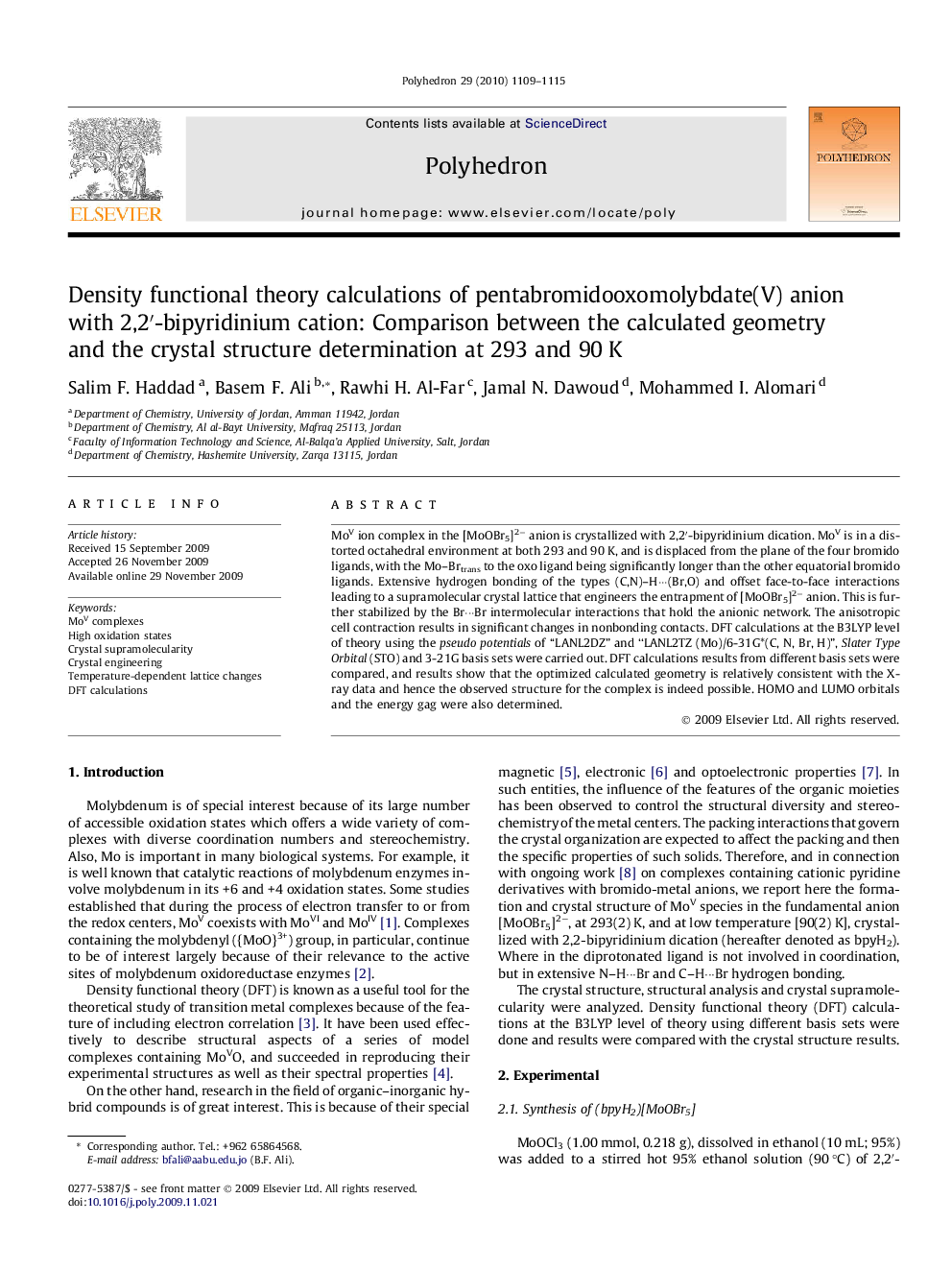| Article ID | Journal | Published Year | Pages | File Type |
|---|---|---|---|---|
| 1339328 | Polyhedron | 2010 | 7 Pages |
MoV ion complex in the [MoOBr5]2− anion is crystallized with 2,2′-bipyridinium dication. MoV is in a distorted octahedral environment at both 293 and 90 K, and is displaced from the plane of the four bromido ligands, with the Mo–Brtrans to the oxo ligand being significantly longer than the other equatorial bromido ligands. Extensive hydrogen bonding of the types (C,N)–H···(Br,O) and offset face-to-face interactions leading to a supramolecular crystal lattice that engineers the entrapment of [MoOBr5]2− anion. This is further stabilized by the Br···Br intermolecular interactions that hold the anionic network. The anisotropic cell contraction results in significant changes in nonbonding contacts. DFT calculations at the B3LYP level of theory using the pseudo potentials of “LANL2DZ” and “LANL2TZ (Mo)/6-31G*(C, N, Br, H)”, Slater Type Orbital (STO) and 3-21G basis sets were carried out. DFT calculations results from different basis sets were compared, and results show that the optimized calculated geometry is relatively consistent with the X-ray data and hence the observed structure for the complex is indeed possible. HOMO and LUMO orbitals and the energy gag were also determined.
Graphical abstractIntermolecular interactions leading to a supramolecular crystal lattice that engineers the entrapment of [MoOBr5]2− anion in the solid state crystallized with 2,2′-bipyridinium cation. DFT calculations at the B3LYP level of theory using the pseudo potentials of “LANL2DZ” and “LANL2TZ” basis set function type, Slater Type Orbital (STO) and 3-21G basis sets were carried out. The optimized geometries are in good agreement with the X-ray data. HOMO, LUMO and energy gap were also determined.Figure optionsDownload full-size imageDownload as PowerPoint slide
